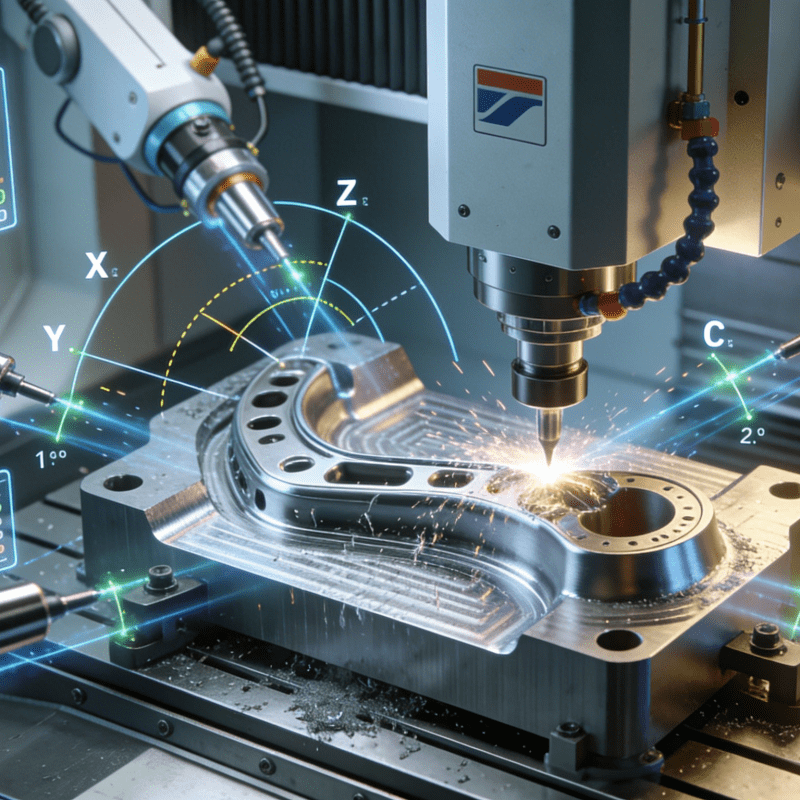
As a powerful technological force, AI automation is profoundly changing the operational models of enterprises and the development pattern of society. By integrating the advantages of artificial intelligence and automation tools, it realizes efficient, precise, and intelligent workflows, bringing significant benefits and enhanced competitiveness to enterprises.
In today’s digital era, AI automation is transforming the operational models of various industries at an unprecedented speed and depth. By combining intelligent algorithms with traditional automation methods, it not only greatly improves work efficiency and accuracy but also minimizes manual intervention, bringing unprecedented changes to enterprises and society.
Definition and Core Elements of AI Automation
AI automation is an advanced solution that integrates artificial intelligence technology with automation tools, aiming to handle various tasks and processes in an intelligent manner. Its core elements mainly include the following aspects:
Artificial Intelligence
Artificial intelligence endows machines with human-like thinking, learning, and decision-making capabilities. Through complex algorithms and models, it can extract valuable information from massive amounts of data and make reasonable judgments and decisions based on it. For example, in the field of image recognition, artificial intelligence can accurately identify objects, scenes, and other information in images through learning a large number of image data, providing strong technical support for security monitoring, autonomous driving, and other fields.
Automation Tools
Automation tools focus on handling tedious, repetitive, and highly regular tasks. They can efficiently complete tasks according to preset rules and processes, greatly improving work efficiency. For example, in the manufacturing industry, robots on automated production lines can accurately complete the assembly, welding, and other work of parts, which is not only fast but also stable in quality. When these automation tools are combined with artificial intelligence, they can more flexibly respond to various complex situations and realize more intelligent workflows. For instance, in the production of medical equipment, AI-driven catheter assembly machines can adjust the clamping force and assembly angle in real-time through visual recognition, achieving zero-error operation in the precise docking of flexible catheters and metal joints. This not only ensures the safety of medical products but also increases production efficiency by more than 40%, perfectly demonstrating the collaborative value of AI and automation tools.
Machine Learning
Machine learning is an important branch of artificial intelligence, which enables systems to automatically learn and improve by analyzing data. Different from traditional programming methods, machine learning does not require humans to write a large number of rules and instructions, but allows the system to automatically discover patterns and models from data. For example, in financial risk prediction, machine learning algorithms can automatically identify potential risk factors through learning historical transaction data and assess the risk of new transactions, thereby improving the accuracy and efficiency of risk prevention and control.
Natural Language Processing
Natural language processing is a key technology for interaction between artificial intelligence and human language. It enables machines to understand the intentions expressed by humans in text and speech and communicate with humans in a natural way. For example, chatbots are a typical application of natural language processing technology. They can understand users’ needs through conversations and provide corresponding help and answers. Whether it is online customer service, intelligent voice assistants, or multilingual translation tools, natural language processing makes artificial intelligence closer to human life and work, greatly expanding its application scenarios.
Working Principle of AI Automation
The operation process of AI automation is a complex and orderly system engineering, mainly including the following key steps:
Data Collection and Preprocessing
AI automation first needs to collect a large amount of data from various sources, which may come from files, websites, chat records, sensors, and other channels. The collected raw data is often disorganized and needs to be cleaned, sorted, and preprocessed to prepare for subsequent analysis and application. For example, in the medical field, patient data collected from electronic medical record systems may contain a lot of errors, missing values, and duplicate information. Through data preprocessing, these data can be cleaned, and valuable parts can be extracted to provide accurate data support for subsequent medical diagnosis and treatment.
Pattern Recognition and Analysis
The preprocessed data will be input into artificial intelligence algorithms. The algorithms will identify patterns and rules in the data through complex mathematical models and calculation methods. These patterns may be hidden beneath the surface of the data and need to be discovered through multi-dimensional analysis and mining. For example, in market analysis, through the analysis of consumer purchase behavior data, artificial intelligence algorithms can discover patterns such as consumers’ preferences and purchasing habits, thereby helping enterprises formulate more accurate marketing strategies.
Decision-Making and Execution
Based on the identified patterns and rules, the AI automation system will make corresponding decisions or provide suggestions. In fully automated scenarios, these decisions and operations can be automatically executed without manual intervention. For example, in intelligent transportation systems, through real-time analysis of traffic flow data, the system can automatically adjust the duration of traffic lights, optimize traffic flow, and reduce congestion. At the same time, the AI automation system will continue to learn and optimize based on the execution results to improve the accuracy and efficiency of decision-making.
Continuous Learning and Optimization
An important feature of AI automation is that it can continuously learn and evolve over time. Through machine learning algorithms, the system can summarize experience and lessons from each execution result, and automatically adjust and optimize its own models and parameters. For example, in intelligent customer service systems, as the interaction with users increases, the system can continuously learn users’ language habits and problem types, thereby improving the accuracy and satisfaction of answers. This ability of continuous learning and optimization enables AI automation systems to better adapt to the changing environment and needs and always maintain an efficient and accurate working state.
Application Scenarios of AI Automation
AI automation has been widely applied in various industries, bringing tremendous changes and progress to society. The following are some typical application scenarios:
Customer Service
In the field of customer service, AI automation has greatly improved service efficiency and quality through chatbots and online help systems. Chatbots can answer customers’ questions in real-time and provide 24-hour uninterrupted service, greatly shortening customers’ waiting time. For example, intelligent customer service robots on some e-commerce platforms can quickly and accurately answer users’ questions about product information, order status, return and exchange policies, etc., improving users’ shopping experience. At the same time, through natural language processing technology, chatbots can also understand users’ intentions and provide more personalized services and suggestions.
Manufacturing Industry
In the manufacturing industry, AI-driven robots and automated equipment are changing traditional production methods. They can complete high-precision parts assembly, welding, testing, and other work on the assembly line, which not only improves production efficiency but also reduces production costs and defect rates. For example, automobile manufacturing enterprises have realized the full-process automation from parts processing to vehicle assembly by introducing AI automated production lines, which greatly shortens the production cycle and improves product quality. In addition, through machine learning algorithms, the system can also monitor production equipment in real-time and predict faults, discover potential fault hazards in advance, reduce downtime, and improve equipment utilization.
Financial Industry
In the financial field, AI automation has significantly improved the speed and accuracy of financial transaction processing. It can quickly identify abnormal situations such as wrong payments and fraudulent transactions, automatically conduct risk assessment and credit rating, and even realize automated account management. For example, some banks can monitor customers’ transaction behaviors in real-time by introducing AI anti-fraud systems, timely discover and block suspicious transactions, and protect customers’ fund security. At the same time, AI automation can also help financial institutions optimize investment portfolios, improve investment returns, and provide strong support for the stability and development of financial markets.
Medical Industry
In the medical field, AI automation has brought new opportunities for the improvement of medical services and the optimal allocation of medical resources. It can assist doctors in disease diagnosis, treatment plan formulation, and even predict the occurrence and spread of diseases. For example, by analyzing a large amount of medical image data, AI algorithms can assist doctors in quickly and accurately finding lesion sites, improving the accuracy and efficiency of diagnosis. At the same time, AI automation can also help hospitals optimize patient appointment systems, reasonably arrange the work of medical staff, and improve the quality and efficiency of medical services. In addition, in terms of medical record management, AI automation can safely and neatly store patients’ electronic medical records, facilitating doctors to consult and call them at any time, providing strong guarantee for patients’ treatment.
Value and Advantages of AI Automation
- AI automation has brought many significant values and advantages to enterprises and society, mainly reflected in the following aspects:
Seamless Integration and Efficient Collaboration
Advanced AI automation tools can seamlessly integrate with existing systems, enabling efficient collaborative work without large-scale transformation and adjustment of existing business processes. This seamless integration not only reduces the cost of enterprise technical transformation but also gives full play to the functions and advantages of existing systems, achieving the effect of 1 + 1 > 2. For example, enterprises can embed AI automation modules in the existing ERP system to realize intelligent management of procurement, production, sales, and other links, improving the efficiency and competitiveness of the entire supply chain.
Efficient Handling of Repetitive Tasks
AI automation has unparalleled advantages in handling repetitive tasks. It can complete tasks with extremely high speed and accuracy, greatly improving work efficiency. For example, in data entry work, AI automation tools can complete a large amount of data entry and verification work in a short time, avoiding errors and omissions that may occur in manual entry. At the same time, due to the efficiency of AI automation systems, enterprises can invest more human resources and time in more creative work, promoting the innovative development of enterprises.
Cost Savings and Error Reduction
By introducing AI automation, enterprises can reduce their dependence on labor to a certain extent, thereby reducing labor costs. At the same time, AI automation systems can strictly follow preset rules and standards when performing tasks, avoiding errors and mistakes caused by human factors, and improving the quality and reliability of work. For example, in the field of logistics and distribution, through AI automated path planning and scheduling systems, distribution routes can be optimized, transportation mileage and time can be reduced, and transportation costs can be lowered. At the same time, the system can also automatically identify and handle abnormal situations, avoiding problems such as loss and damage of goods caused by human errors, and ensuring the smooth progress of logistics and distribution.
All-Weather Operation and Stability
AI automation systems do not need to rest and can realize 24-hour uninterrupted operation. This all-weather working mode provides stable and reliable service support for enterprises, especially in some time-sensitive business fields such as financial transactions and customer service, its advantages are more obvious. For example, in the financial trading market, AI automated trading systems can monitor market dynamics in real-time during the opening hours of global markets and automatically execute trading instructions to ensure the timeliness and accuracy of transactions. At the same time, due to the stability of AI automation systems, enterprises can reduce the risk of business interruption caused by system failures or human errors, ensuring business continuity and stability.
Challenges and Responses of AI Automation
Although AI automation has brought many benefits, it also faces some challenges and problems in its development and application, which need to be taken seriously and solved.
Employment Impact and Social Equity
With the widespread application of AI automation, some traditional jobs may be impacted, leading to the risk of unemployment for some people. For example, in some repetitive labor-intensive industries, such as data entry clerks and customer service representatives, they may be replaced by AI automation systems. However, we should also see that the development of AI automation will also create some new employment opportunities, such as AI engineers, data analysts, algorithm optimization experts, etc. Therefore, society needs to strengthen skills training and re-education for workers to help them adapt to the new employment situation and realize career transformation. At the same time, the government and enterprises also need to pay attention to social equity issues while promoting the development of AI automation, and ensure that everyone has equal opportunities to adapt to and benefit from the changes brought by technological transformation through reasonable policy guidance and resource allocation.
Cost and Return on Investment
The research and development and application of AI technology require a lot of capital investment, including costs in hardware equipment, software development, data collection and processing, etc. For some small and medium-sized enterprises, it may be difficult to bear such high costs. In addition, the investment return cycle of AI automation may be relatively long, requiring enterprises to bear certain economic pressure in the short term. Therefore, when considering introducing AI automation, enterprises need to conduct sufficient market research and cost-benefit analysis, and reasonably select suitable technical solutions and application scenarios according to their own business needs and development strategies. At the same time, the government can also encourage enterprises to increase investment in the research and development and application of AI automation technology through relevant policy support and subsidy measures, promoting industrial upgrading and development.
Data Security and Privacy Protection
The operation of AI automation systems depends on a large amount of data support, and these data often contain users’ personal privacy and enterprises’ commercial secrets. Once the data is leaked or maliciously used, it will bring huge losses to individuals and enterprises. Therefore, data security and privacy protection are issues that must be highly valued in the development of AI automation. Enterprises need to establish a sound data security management system, adopt advanced encryption technology, access control technology, and other means to ensure the security and confidentiality of data in the process of collection, storage, transmission, and use. At the same time, the government also needs to strengthen the construction of laws and regulations on data security and privacy protection, increase the crackdown on illegal acts, and create a safe and reliable environment for the development of AI automation.
Future Outlook of AI Automation
With the continuous progress of technology and the continuous expansion of application scenarios, the development prospect of AI automation is very broad. In the future, we can foresee the following development trends:
More Intelligent and Efficient
AI automation systems will become more intelligent and efficient, able to handle more complex and diverse tasks. Through the application of advanced technologies such as deep learning and reinforcement learning, the system will be able to better understand human needs and intentions and provide more accurate and personalized services. For example, in the field of smart home, the future AI automation system will be able to automatically adjust the working status of indoor temperature, lighting, electrical equipment, etc., according to users’ habits and preferences, providing users with a more comfortable and convenient living experience.
In-depth Collaboration with Humans
AI automation will form a closer collaborative relationship with humans, rather than completely replacing humans. Human unique abilities such as creativity, emotion, and moral judgment will be combined with the efficiency and precision of AI automation to jointly promote social progress and development. For example, in the field of creative design, human designers can use AI automation tools to quickly generate design sketches and creative schemes, and then optimize and improve them through their own professional knowledge and aesthetic judgment, thereby improving design efficiency and quality.
Popularization and Improved Usability
With the maturity of technology and the reduction of costs, AI automation will gradually spread to more industries and fields, becoming a common production tool and service means. At the same time, the operation and use of AI automation systems will become simpler and easier to use, and ordinary users can easily master and apply them. For example, some simple AI automation tools can enable users to create and execute automated tasks without professional programming knowledge and technical background through graphical interfaces or natural language interaction.
Ethics and Sustainable Development
In the development process of AI automation, ethics and sustainable development issues will receive more and more attention. While applying technology, we need to fully consider its impact on human society, the environment, and ecology, and ensure that the development of technology conforms to human values and interests. For example, in the development of autonomous vehicles, we need to consider how to reduce environmental pollution and energy consumption while ensuring traffic safety. At the same time, we also need to strengthen the ethical review and supervision of AI automation technology to prevent it from being abused or used for unethical purposes.
Summary
As a powerful technological force, AI automation is profoundly changing the operational models of enterprises and the development pattern of society. By integrating the advantages of artificial intelligence and automation tools, it realizes efficient, precise, and intelligent workflows, bringing significant benefits and enhanced competitiveness to enterprises. However, we must also clearly realize that the development of AI automation is not smooth sailing, and it faces many challenges such as employment impact, cost investment, and data security. Only through the joint efforts of the government, enterprises, and society, reasonably planning and guiding the development direction of AI automation, giving full play to its positive role, and effectively responding to various challenges and risks, can we truly realize the harmonious coexistence of AI automation and human society and jointly create a better future.
Screen and sieve mesh assembly robot
Advantages of artificial intelligence screen and sieve mesh assembly machine




















